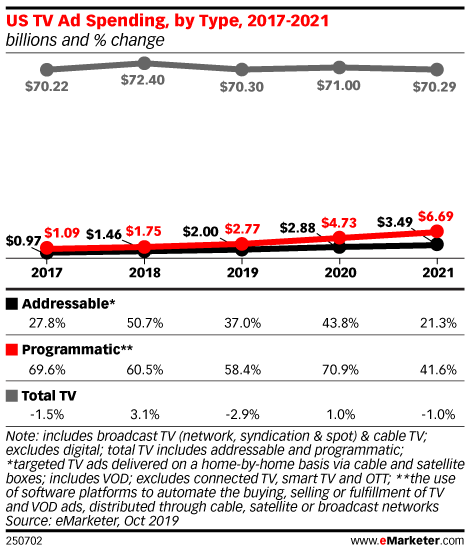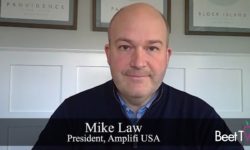Matthew Kramer wants to sell brands on the power of connected TV – but the paucity of effective measurement is making it difficult,
So the managing director or advanced advertising at Omnicom Media Group is making CTV measurement a focus for the year ahead.
In this video interview with Beet.TV, Kramer describes the problem – and what needs to happen to solve it.
Up-sizing measurement
“Measurement is a really key thing for 2021,” Kramer says “Measurement is going to be big for us in 2021.
“There’s a major outage in terms of (measuring) app-based media. (In) OTT, which is the largest growing and the fastest growing medium we have today, we don’t have a great way of measuring that, Nielsen doesn’t have a great way of measuring that area.
“(We will be) working with the partners and the sellers to make sure that there’s ways for us to get the information we need from them to at least incorporate that black box into our overall reach frequencies and then eventually things like MTA and attribution analysis is really key.”
Omnicom Media Group Embraces National Addressable TV Amid OTT Boom: Kramer
Dearth of data
The challenges are severalfold. In digital display, of course, identifiers are declining in usefulness with the deprecation of third-party tracking cookies and the move to opt-in mobile ad identifiers.
But many connected TV platforms have never known such device-level identifiers in the first place.
And so the same challenge faced by digital display advertisers is also one that needs addressing for CTV advertisers.
“Right now, we’re living in a world where, specifically app-based media, we can’t even really plan against it that well,” Kramer says.
“We’re triangulating data that we’re getting from the SSPs, that we’re getting from the publishers themselves, and that we’re getting from guys like Nielsen. But not everybody has the entire ecosystem and so we’re really going to have to work and continue to work through the rest of this year and into 2021.”
Providing insight from EVP at @InvidiTechnologies Michael Kubin, @AENetwork’s Santosh Mathai, and @OmnicomGroup’s Matthew Kramer, @MediaWhiz Jeff Minsky explores #addressability’s new abilities thanks to @Adcuratio #OnTheVillage. #AENetworks #Omnicom #OTThttps://t.co/K3eODGRVGY
— MediaVillage.org (@MediaVillageOrg) October 14, 2020
Growth probability

EMarketer last November estimated programmatic TV ad spending will reach $6.69 billion in the US by 2021, more than doubling from $2.77 billion.
That makes it a still-small but fast-growing part of the overall TV ad spending pie.
Ad buyers are getting interested by the ability to target specific audiences or households, the ability to use other data in doing so and the ability
But growth is going to depend on more platforms opening up to offer the capability at scale.
Addressable enablement
Kramer says he is welcoming the growing number of national-level addressable ad placement opportunities.
“Right now we’re working with the MVPDs, which are of course your local cable provider,” he says. “We’re able to buy through their smart TV boxes, we’re able to deliver specific ads to specific households and that’s available in about 60 to 65% of U.S. cable TV households.”
But Kramer says agencies and their brands need more scale than local cable.
“The way that we do it is working with guys like Project OAR, we do it with working with Canoe who is doing more of the VOD side, and also working with the TV manufacturers like Samsung, LG Vizio, and trying to get more and more of those homes to be addressable so that we can serve again, the right ads to the right household.”
‘Very exciting’
That means “enablement” – the craft of utilizing more and more such opportunities i is another big watchword for Kramer in 2021, “a huge endeavour for us”.
“We’re already talking to the major network groups like WarnerMedia, for example, who are starting to dip their toes in allowing for their national inventory to become more addressable,” he says.
“So it’s very exciting. We’ve been waiting for this moment for many years now and we’re excited to start working with these partners to enable those households to be more addressable.”
You are watching “An Open Ecosystem is Key to Advanced TV Success,” a Beet.TV leadership video series presented by DISH Media. For more videos, please visit this page.



































